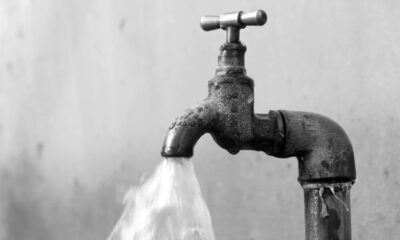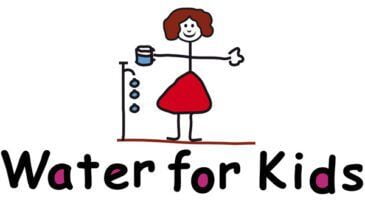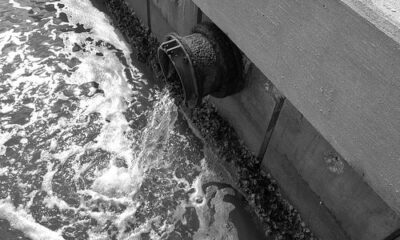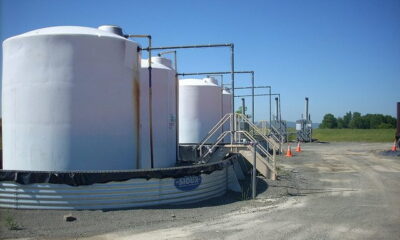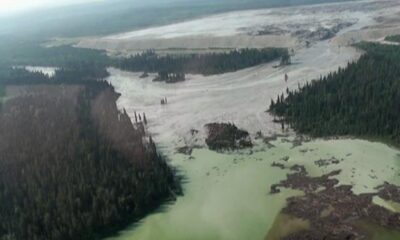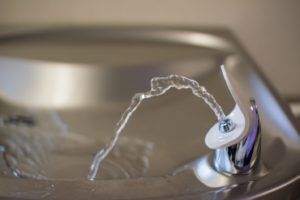

Environment
How Safe Is Your Drinking Water?
You turn on the faucet when you brush your teeth, cook dinner, wash fruit and vegetables, and pour yourself a glass of cold water. But if your town’s water supply is polluted, you could be putting your health – and the health of your entire family – at risk every time you turn on the tap. Should you be concerned about the safety of your drinking water?
Before you buy a car, you take it on a test drive and ask the dealer about its safety record. Before you undergo surgery, you get a second opinion from an independent specialist. And before you grill up a steak, you smell it to make sure it hasn’t gone bad. Every day, you take hundreds of measures to protect your health and the health of your family. But have you given any thought to the water pouring out of your faucet?
Water may look clear, but a single glass can contain thousands of pollutants. Some pollutants occur naturally in the environment; nitrates and arsenic, for instance, enter the water supply as natural deposits erode. Fertilizers and pesticides applied to farm fields and backyard gardens can also find their way into the water supply. Chemicals from manufacturing and industrial activities can also pollute your drinking water. Gasoline from gas stations and marinas, PERC from dry cleaners, and cleaning products from around your own home can all swirl down drains and grates and into the water supply. Lastly, human and animal waste can foul a city’s drinking water, turning a clean glass of H2O into a test tube of bacteria and viruses.
These pollutants all have the potential to cause serious health problems Selenium, a discharge from petroleum refineries, can cause circulatory problems and fingemail loss Mercury, which enters the water supply as runoff from landfills and farms, can cause kidney damage. And viruses found in human waste can cause gastrointestinal illnesses. Yet not everyone will have the same reaction to a pollutant; people with weakened immune systems have a greater risk of developing health complications from drinking contaminated water. Transplant recipients, cancer patients undergoing chemotherapy, the elderly, pregnant women, and young children should never drink polluted water.
Fortunately, most of the water flowing into kitchen sinks is safe, thanks to water treatment plants, the Environmental Protection Agency (EPA), and the Safe Drinking Water Act. Water treatment plants eliminate pollutants from the water supply, providing Americans with clean and safe drinking water. The EPA monitors treatment plants and sets safe drinking water standards, which all water suppliers must meet. And the Safe Drinking Water Ad, passed by Congress in 1974, requires all water suppliers to notify the public of any contaminants found in the water supply. If a hazardous chemical or virus is ever found in your town’s water supply, the water supplier must notify you and your neighbors within 24 hours.
Yet these measures are not foolproof. According to the EPA, in 2001, one out of every four community water systems either failed to conduct tests on the water supply or failed to report the results of those tests to the EPA. According to the 2006 National Public Water Systems Compliance Report, over 11, 000 water systems reported health-based violations; over 26 million Americans were exposed to pollutants that could affect their health. Arid transporting all that water from the source to the tap is a difficult task. It requires a massive infrastructure of underground pipes and treatment plants. Unfortunately, that infrastructure is aging. The EPA estimates that it will cost over $150 billion, spent over a 20-year period, to overhaul the country’s water infrastructure. If there is a funding shortfall, the water supply could be in danger.
So what can you do to ensure your town’s water supply is safe from contamination? Contact your state drinking water agency and ask if they are complying with EPA regulations. Read the Consumer Confidence Report, which your water supplier should send to you every year. Ask to see your public officials’ environmental impact statements. You can protect yourself against gastrointestinal illnesses and kidney damage- and all the other side effects of drinking polluted water – by staying informed. According to the EPA, the avenge American uses go gallons of water a day; make sure the 90 gallons you use are clean and pollutant-free.
Author Bio:
Maggie Martin is completing her PhD in Cell Biology, works as a lab tech for Mybiosource.com and administered ELISA kits in the diagnosis and treatment of various diseases. She contributes content on Biotech, Life Sciences, and Viral Outbreaks. Follow on Twitter @MaggieBiosource


 Environment10 months ago
Environment10 months agoAre Polymer Banknotes: an Eco-Friendly Trend or a Groundswell?

 Environment12 months ago
Environment12 months agoEco-Friendly Home Improvements: Top 7 Upgrades for 2025

 Features9 months ago
Features9 months agoEco-Friendly Cryptocurrencies: Sustainable Investment Choices

 Features10 months ago
Features10 months agoEco-Friendly Crypto Traders Must Find the Right Exchange
